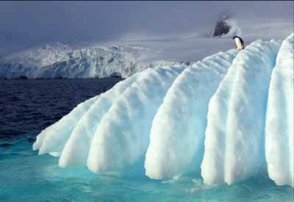The Antarctic continent is formed entirely by ice and has unique characteristics. This region holds about 10% of the emerging lands on the planet.

The heart of Antarctica is made up of a great plateau of ice. Thus, it has altitudes ranging between 1500 and 4000 meters above sea level.
This region corresponds to an area of ice cap. Occupying a territory similar in size to Brazil, it is considered the largest of the deserts, because it presents the most adverse conditions for the maintenance and proliferation of life.

It was in the heart of Antarctica that the lowest temperature on the planet, around -89.2°C, was recorded at Vostok, a Russian base. In addition, it features the darkness of the polar night that lasts for 4 to 6 months. In the region, the occurrence of constant winds causes a series of erosions on the ice.

Despite apparently being a humid place, the relative humidity of the air is very similar to those that predominate in sand deserts, this is because the occurrence of snowfall is rare, and when it does, it quickly compacts, becoming blocks of ice. A large portion of the ice cap settles in deeper areas of the continent and certain mountains rise to the surface; elsewhere, ice settles below sea level.
Eduardo de Freitas
Graduated in Geography
Brazil School Team
Natural landscapes - geography - Brazil School


